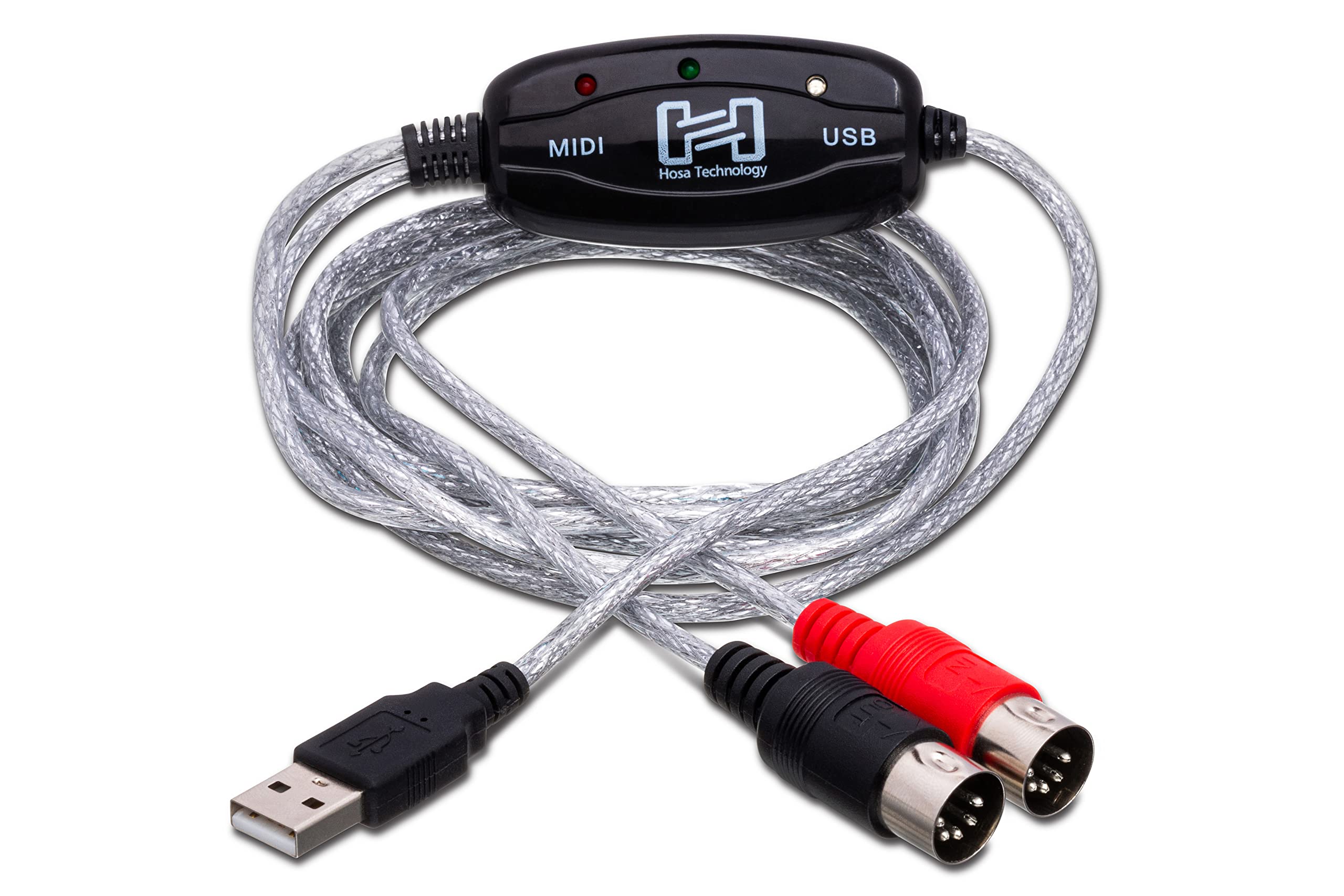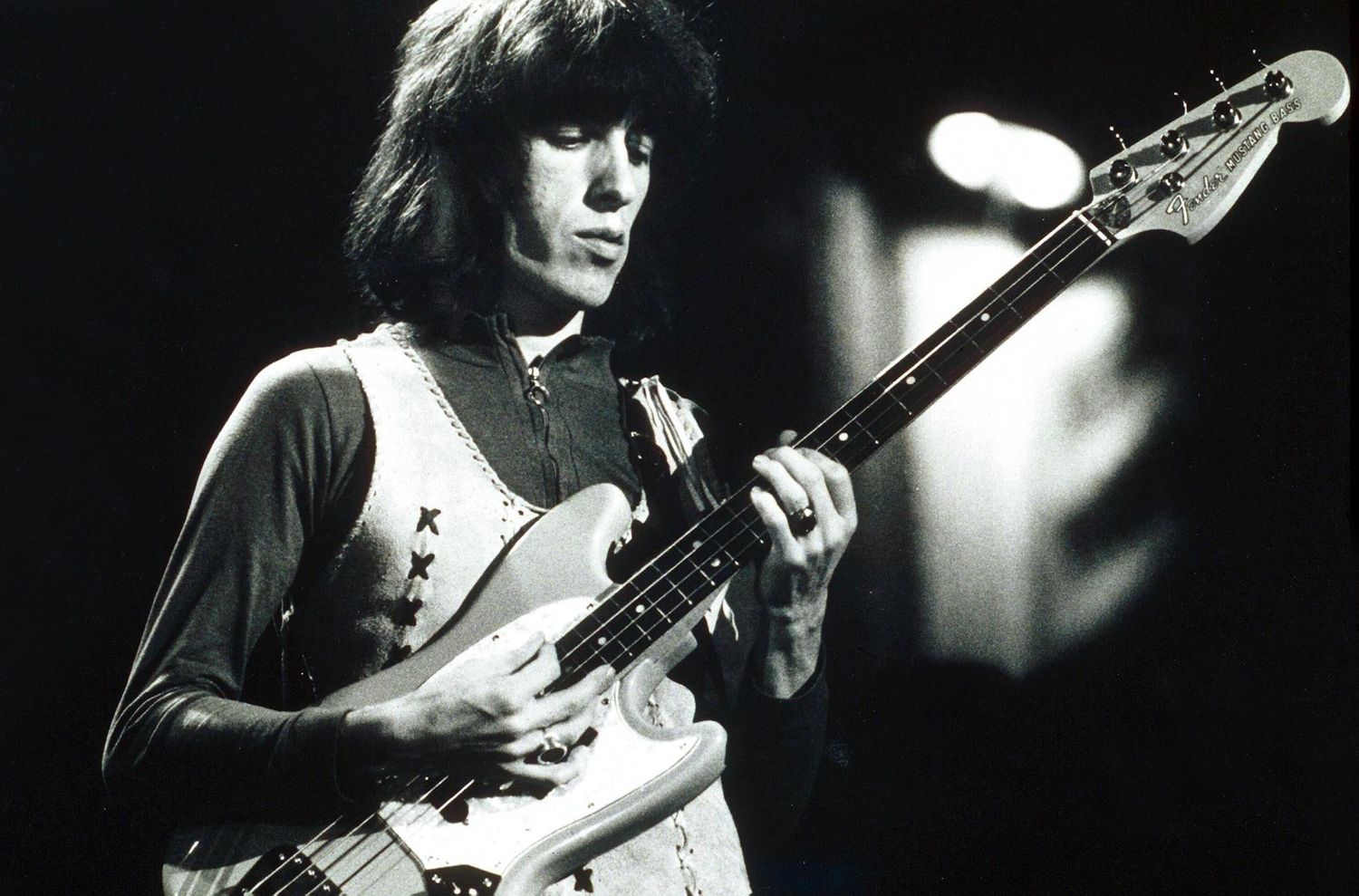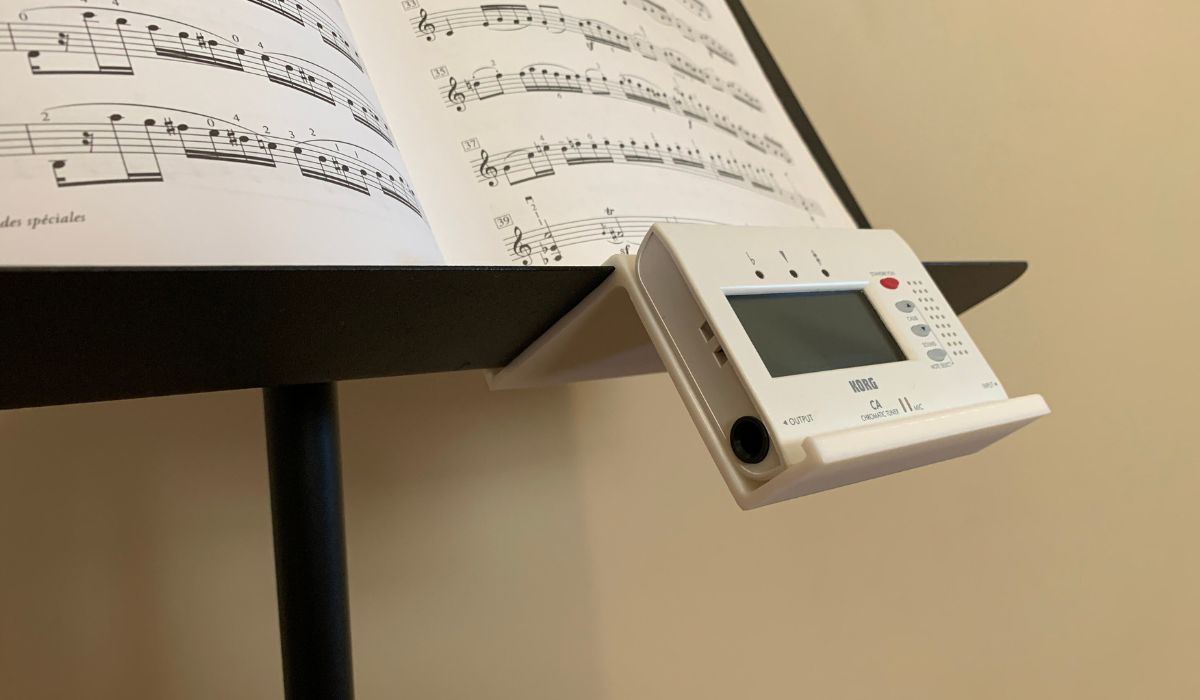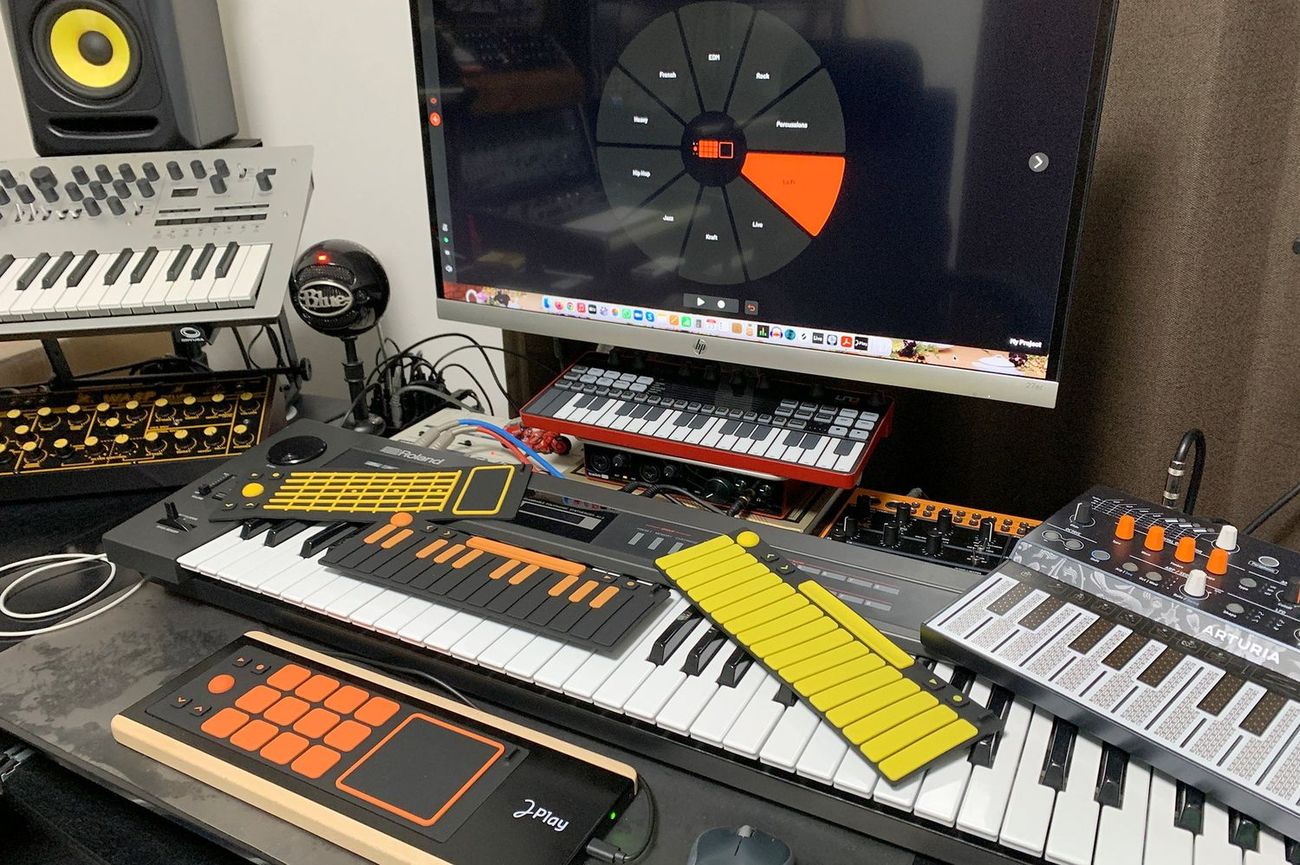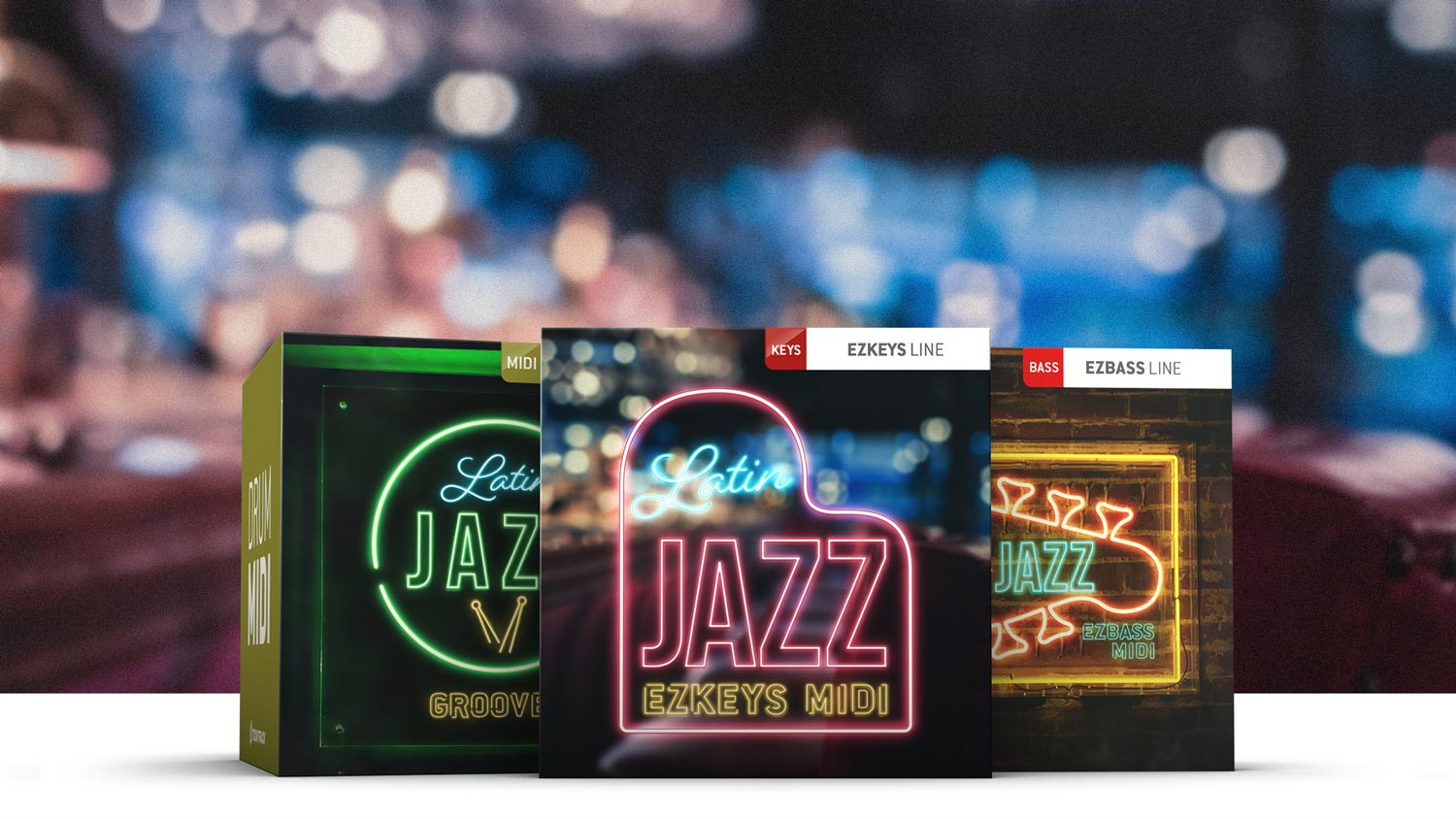Home>Production & Technology>MIDI>What Does MIDI Stand For?


MIDI
What Does MIDI Stand For?
Published: February 19, 2024
Discover what MIDI stands for and how it revolutionizes music production. Learn about its uses and benefits in the music industry.
(Many of the links in this article redirect to a specific reviewed product. Your purchase of these products through affiliate links helps to generate commission for AudioLover.com, at no extra cost. Learn more)
Introduction
MIDI, which stands for Musical Instrument Digital Interface, is a powerful and versatile tool that has revolutionized the way music is created, performed, and recorded. This ingenious technology has had a profound impact on the music industry, enabling musicians, producers, and composers to unleash their creativity in unprecedented ways. Whether you're a seasoned professional or an aspiring musician, understanding MIDI is essential for navigating the modern music landscape.
MIDI is not just a mere acronym; it represents a gateway to a world of endless musical possibilities. From controlling instruments and recording performances to creating complex compositions, MIDI has become an integral part of music production and performance. As we delve into the intricacies of MIDI, you'll discover how this remarkable system has transformed the way we interact with musical instruments and software.
In this article, we will explore the origins of MIDI, its fundamental principles, and its diverse applications across various musical domains. By gaining a deeper understanding of MIDI, you'll be equipped to harness its capabilities and elevate your musical endeavors to new heights. So, let's embark on a captivating journey through the realm of MIDI and unravel the secrets behind its profound influence on the world of music.
What is MIDI?
MIDI, short for Musical Instrument Digital Interface, is a universal protocol that allows electronic musical instruments, computers, and other devices to communicate, control, and synchronize with each other. It serves as a language that enables different musical components to understand and interact with each other, regardless of their make, model, or manufacturer. MIDI is not a form of audio signal; rather, it transmits data related to musical notes, dynamics, pitch, and control signals.
At its core, MIDI provides a standardized way for musical devices to exchange information, facilitating seamless integration and interoperability within the realm of music production and performance. This means that a MIDI keyboard can communicate with a software synthesizer, a drum machine can synchronize with a sequencer, and a digital audio workstation (DAW) can control various parameters of an external MIDI-compatible device.
MIDI data is transmitted via MIDI cables, USB connections, or wireless networks, allowing for the transmission of real-time performance data as well as stored musical sequences. This versatile protocol has become the backbone of modern music production, offering unparalleled flexibility and control over a wide array of musical elements.
One of the key advantages of MIDI is its ability to separate the control information from the actual sound generation process. This means that a single MIDI controller can be used to trigger different sounds from multiple MIDI-compatible devices, offering musicians and producers a level of flexibility that was previously unattainable with traditional analog instruments.
Furthermore, MIDI is not limited to just musical instruments; it extends its reach to lighting systems, stage effects, and even virtual reality applications, showcasing its adaptability and expansive utility beyond the confines of music production.
In essence, MIDI serves as a unifying force in the world of music technology, enabling seamless communication and integration between a diverse range of musical devices and software. Its universal nature and versatility have made it an indispensable tool for musicians, producers, and sound engineers, shaping the way music is created, recorded, and performed in the digital age.
History of MIDI
The history of MIDI traces back to the early 1980s when the need for a standardized communication protocol for electronic musical instruments became increasingly apparent. Prior to MIDI's inception, the lack of a universal language for musical devices posed significant limitations on their interoperability and integration. This led to the development of MIDI as a groundbreaking solution that would revolutionize the way electronic instruments interacted with each other and with computers.
In 1983, the MIDI 1.0 specification was officially released, marking a pivotal moment in the evolution of music technology. This landmark development was the result of collaborative efforts by leading electronic instrument manufacturers, including Roland, Yamaha, Korg, and others. The MIDI standardization process aimed to establish a common framework for transmitting musical performance data, such as note-on and note-off messages, pitch bend, modulation, and control changes, across different electronic instruments and devices.
The introduction of MIDI brought about a paradigm shift in music production and performance, empowering musicians and producers with unprecedented control and flexibility. With MIDI, electronic instruments could communicate seamlessly, enabling the creation of complex multi-instrument arrangements and the synchronization of various musical components. This newfound interoperability laid the foundation for the modern electronic music revolution, fueling the rise of MIDI-enabled synthesizers, drum machines, sequencers, and computer-based music production systems.
As MIDI continued to gain widespread adoption, its impact extended beyond the realm of electronic instruments. MIDI's versatility and standardized communication protocol made it an indispensable tool for computer-based music production, leading to the emergence of MIDI-compatible software and hardware solutions. This convergence of technology facilitated the seamless integration of MIDI controllers, virtual instruments, and digital audio workstations (DAWs), empowering musicians and producers to craft intricate compositions with unparalleled precision and creativity.
Over the decades, MIDI has evolved to encompass a wide range of capabilities, including MIDI Time Code (MTC) for synchronization, Standard MIDI Files (SMF) for storing musical data, and General MIDI (GM) for ensuring consistent playback across different devices. The ongoing development of the MIDI standard has continued to adapt to the evolving landscape of music technology, ensuring its relevance and utility in the digital age.
Today, MIDI stands as a testament to the enduring impact of collaborative innovation, as it continues to empower musicians, producers, and creators with a universal language for musical expression. Its rich history reflects a legacy of technological advancement and creative empowerment, solidifying its position as a cornerstone of modern music production and performance.
How MIDI Works
MIDI operates on a system of digital messages that convey musical information between various devices. These messages are transmitted in real time, allowing for seamless interaction and synchronization between MIDI-compatible instruments, controllers, and software. At the core of MIDI communication are the fundamental principles that govern its functionality.
When a musician plays a note on a MIDI keyboard, for example, the keyboard generates a series of MIDI messages that encapsulate details about the note, such as its pitch, velocity (how forcefully the key was struck), and duration. These messages are then transmitted via MIDI cables, USB connections, or wireless interfaces to the receiving device, whether it's a synthesizer, computer, or other MIDI-compatible equipment.
MIDI messages are structured in a hierarchical format, comprising various types of data. Note messages, for instance, convey information about the onset and release of musical notes, allowing for precise control over the timing and articulation of musical passages. Control change messages enable the manipulation of parameters such as volume, modulation, and expression, providing a dynamic means of shaping the musical performance.
Furthermore, MIDI supports the transmission of system-exclusive (SysEx) messages, which are used for device-specific communication and configuration. These messages allow for the exchange of proprietary data between MIDI devices, enabling in-depth control and customization.
In addition to transmitting performance data, MIDI also facilitates synchronization through MIDI Time Code (MTC) and MIDI Clock messages. MTC enables devices to align their timelines, ensuring accurate synchronization in multi-device setups, while MIDI Clock governs the tempo and timing of musical sequences, maintaining coherence across interconnected equipment.
The versatility of MIDI extends to its ability to transmit Standard MIDI Files (SMF), which store musical data in a standardized format. SMFs enable the seamless exchange of musical compositions between different software and hardware platforms, fostering interoperability and collaboration in music production.
Overall, MIDI's functionality is underpinned by its capacity to transmit a diverse array of musical information, ranging from note events and control changes to synchronization data and file exchange. This comprehensive framework empowers musicians, producers, and creators with the tools to orchestrate intricate musical performances, seamlessly integrate diverse equipment, and unleash their creative potential in the digital realm.
Uses of MIDI
MIDI has permeated virtually every facet of modern music production, performance, and technology, offering a myriad of applications that have reshaped the creative landscape for musicians, producers, and sound engineers. Its versatility and universal compatibility have led to a diverse range of uses, each harnessing the power of MIDI to unlock new possibilities and redefine musical expression.
1. Music Production:
MIDI serves as the backbone of contemporary music production, enabling composers and producers to craft intricate compositions with unparalleled precision and flexibility. From sequencing and arranging musical elements to controlling virtual instruments and synthesizers, MIDI empowers creators to sculpt dynamic soundscapes and orchestrate complex arrangements with ease.
2. Performance and Live Shows:
In the realm of live performance, MIDI plays a pivotal role in facilitating seamless integration between electronic instruments, stage lighting, and audiovisual effects. Musicians can trigger pre-programmed sequences, synchronize backing tracks, and control sound parameters in real time, enhancing the immersive experience for audiences and performers alike.
3. Sound Design and Synthesis:
MIDI unlocks boundless creative potential in sound design and synthesis, allowing for the manipulation of parameters such as envelope, filter, and modulation within virtual and hardware-based synthesizers. This capability enables the creation of evolving textures, expressive soundscapes, and intricate sonic landscapes, expanding the sonic palette available to composers and sound designers.
4. Recording and Arrangement:
MIDI revolutionizes the recording and arrangement process by providing a non-destructive and highly flexible platform for capturing musical performances. With MIDI, artists can edit note timings, adjust velocities, and experiment with different instrument sounds without altering the original performance, offering unparalleled control over the recording and production process.
5. Education and Learning:
MIDI serves as an invaluable educational tool, offering aspiring musicians and students an interactive platform for learning music theory, composition, and production techniques. MIDI keyboards, controllers, and software provide hands-on learning experiences, empowering learners to explore the intricacies of music creation in a dynamic and engaging manner.
6. Interactive Installations and Multimedia:
MIDI extends its reach to interactive installations, multimedia presentations, and interactive art projects, where it facilitates the integration of music, visuals, and interactive elements. This convergence of mediums enables the creation of immersive and interactive experiences, blurring the boundaries between music, technology, and visual arts.
7. Virtual Reality and Gaming:
MIDI finds applications in the realm of virtual reality (VR) and gaming, where it enables the integration of interactive music and sound effects into immersive virtual environments. This integration enhances the immersive qualities of VR experiences and gaming environments, enriching the audio-visual landscape with dynamic and responsive musical elements.
8. Accessibility and Inclusivity:
MIDI technology has been instrumental in promoting accessibility and inclusivity in music creation, offering adaptive solutions for individuals with diverse physical abilities. MIDI controllers and interfaces can be customized to accommodate different accessibility needs, empowering individuals to engage in music production and performance on their own terms.
In essence, MIDI's pervasive influence extends far beyond traditional music production, permeating diverse domains and applications to redefine the boundaries of musical creativity and technological innovation. Its universal language has transcended barriers, empowering creators to sculpt sonic landscapes, orchestrate immersive experiences, and push the boundaries of musical expression in the digital age.
Conclusion
In conclusion, MIDI stands as a testament to the transformative power of technology in the realm of music. From its humble origins to its pervasive influence in modern music production and performance, MIDI has reshaped the creative landscape, empowering musicians, producers, and creators with a universal language for musical expression.
The evolution of MIDI reflects a legacy of collaborative innovation, as leading electronic instrument manufacturers joined forces to establish a standardized communication protocol that transcended the limitations of proprietary systems. This collaborative spirit laid the foundation for a revolutionary paradigm shift, enabling seamless integration and interoperability across a diverse array of musical devices and software.
The fundamental principles of MIDI, rooted in the transmission of digital messages and real-time communication, have unlocked boundless creative potential for musicians and producers. Whether in the studio, on stage, or in educational settings, MIDI has become an indispensable tool for crafting intricate compositions, controlling virtual instruments, and shaping dynamic soundscapes with precision and flexibility.
Furthermore, MIDI's impact extends beyond music production, permeating interactive installations, multimedia presentations, virtual reality, gaming, and accessibility initiatives. Its adaptability and versatility have transcended traditional boundaries, fostering innovative cross-disciplinary collaborations and redefining the intersection of music, technology, and the arts.
As we navigate the digital age of music, MIDI continues to evolve, adapting to the dynamic landscape of music technology while preserving its core principles of interoperability and creative empowerment. Its enduring relevance underscores its status as a cornerstone of modern music production and performance, shaping the sonic tapestry of contemporary musical expression.
In essence, MIDI embodies the spirit of innovation and collaboration, serving as a conduit for musical creativity and technological advancement. Its legacy is woven into the fabric of modern music, empowering creators to push the boundaries of sonic exploration and redefine the possibilities of musical expression.
From the early days of MIDI's inception to its present-day ubiquity, the impact of this universal protocol resonates across generations of musicians, producers, and enthusiasts. As we look to the future, MIDI stands as a testament to the enduring synergy between technology and creativity, inspiring new generations of creators to harness its power and embark on a captivating journey through the realm of musical innovation.



